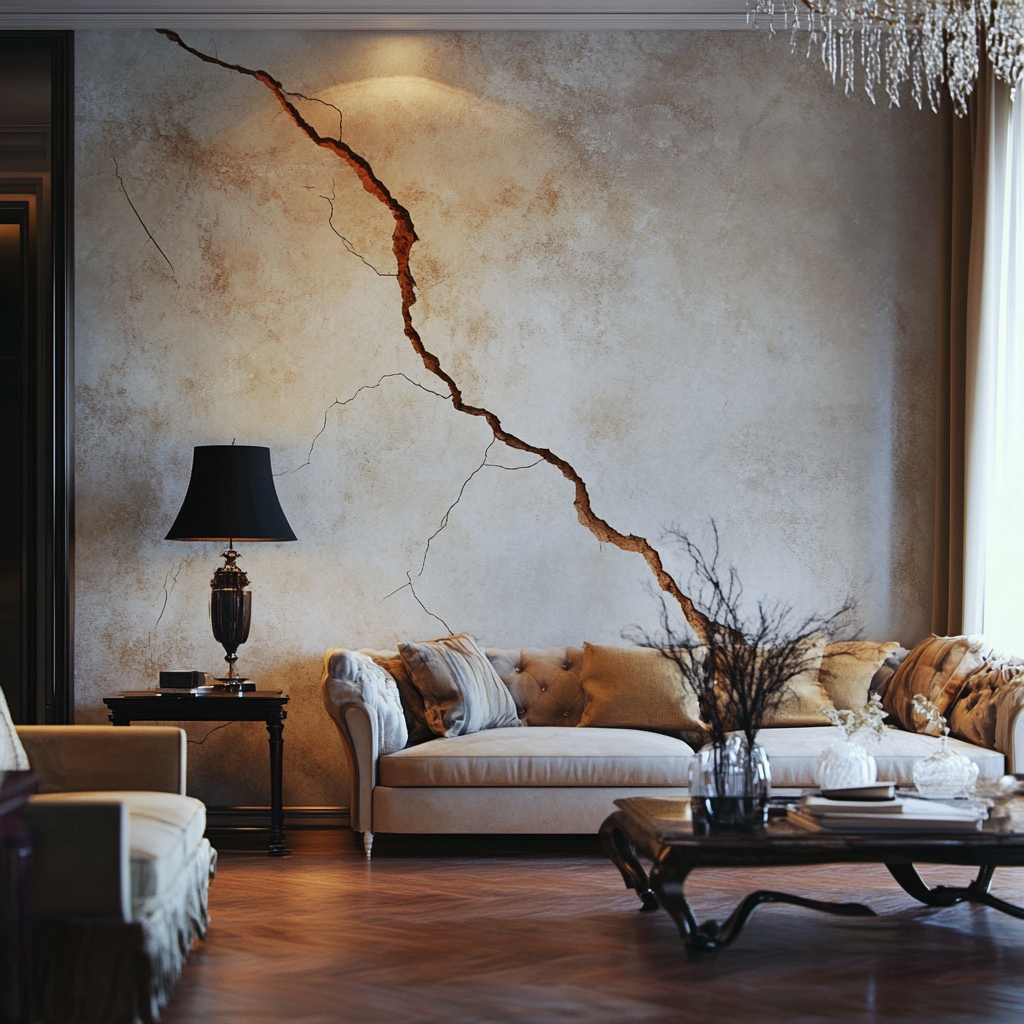
Understanding Drywall Cracks: Common Causes and Types
Cracks in drywall are a common issue, and do you know why it is happening? The common reason behind it is natural changes in the home’s structure or in the environment. We all know ground settles over time, which means ground under your house also settles over time. This natural phenomenon can cause your house to settle too. Which will lead to cracks in the walls and ceilings. Additionally temperature also plays a vital role in this matter, due to temperature fluctuations it forces drywall to expand and contract, which creates stress that result in visible cracks. Also high humidity or moisture play a noticeable role in this matter. Identification of cracks will help you to determine its severity and the best repair approach. For this first of all identify is it a hairline cracks or a stress larger cracks.
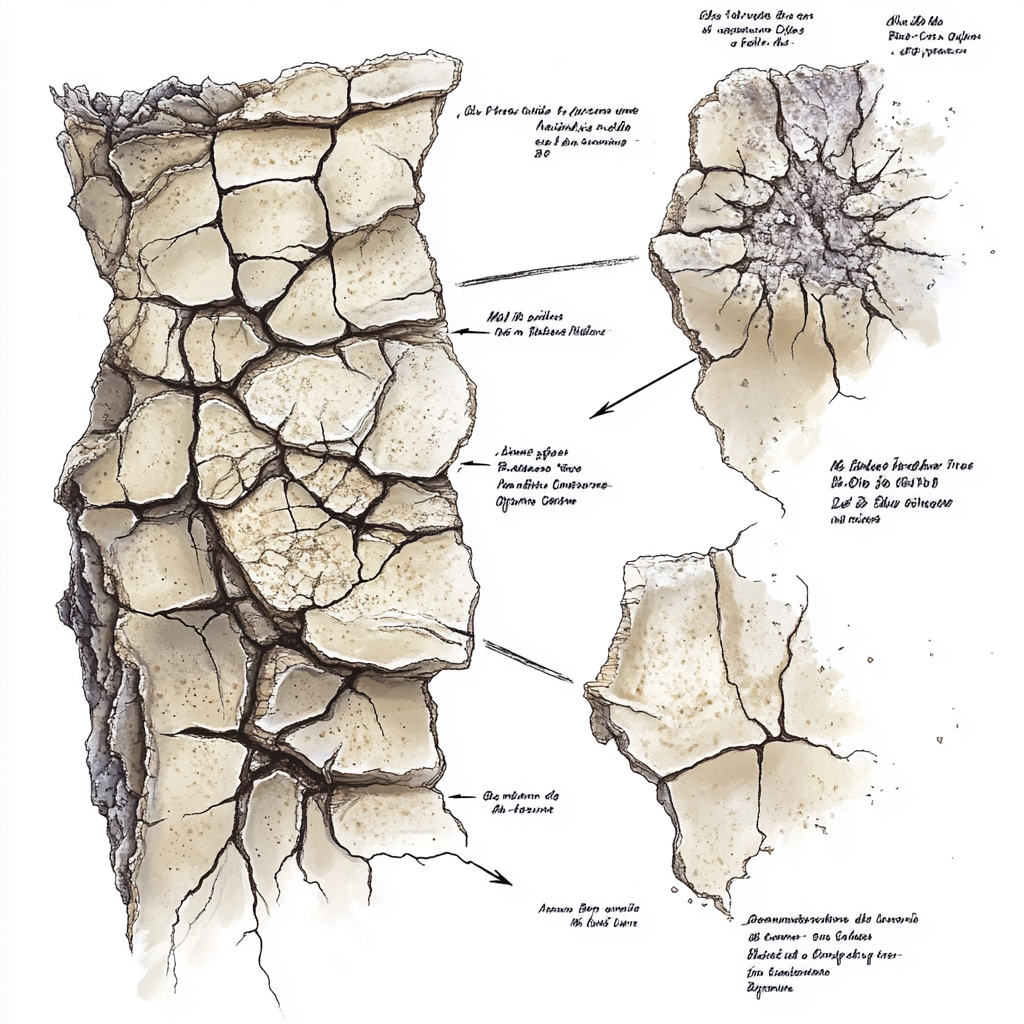
Essential Tools and Materials for Repairing Drywall Cracks
For a stress free and successful repair you have to gather below listed materials.
Spackle or Joint Compound:
- Its special kind of fluid material which is used to fill small cracks, also creates a smooth surface.
Putty Knife:
- To apply the spackle on your wall you will need this tool. A 4-6 inch putty knife will be enough for this work.
Sanding Block or Sandpaper:
- To obtain a smooth drywall surface you have to use sandpaper. For this operation you can use fine grit sandpaper(120-220 grit).
Drywall Tape:
- If your wall’s cracks are larger or too deeper, then this tape will help you to prevent future cracking.
Primer:
- generally it is used to ensure even paint application, also necessary for sealing patched areas.
Paint:
- You will need a little amount of paint to match the wall colour. It will give seamless finishing.
Drop Clothes and Protective Gear:
- To protect you and other house areas you will need some protective gear. Also to clean the paint and spackle droplet you will need a drop cloth.
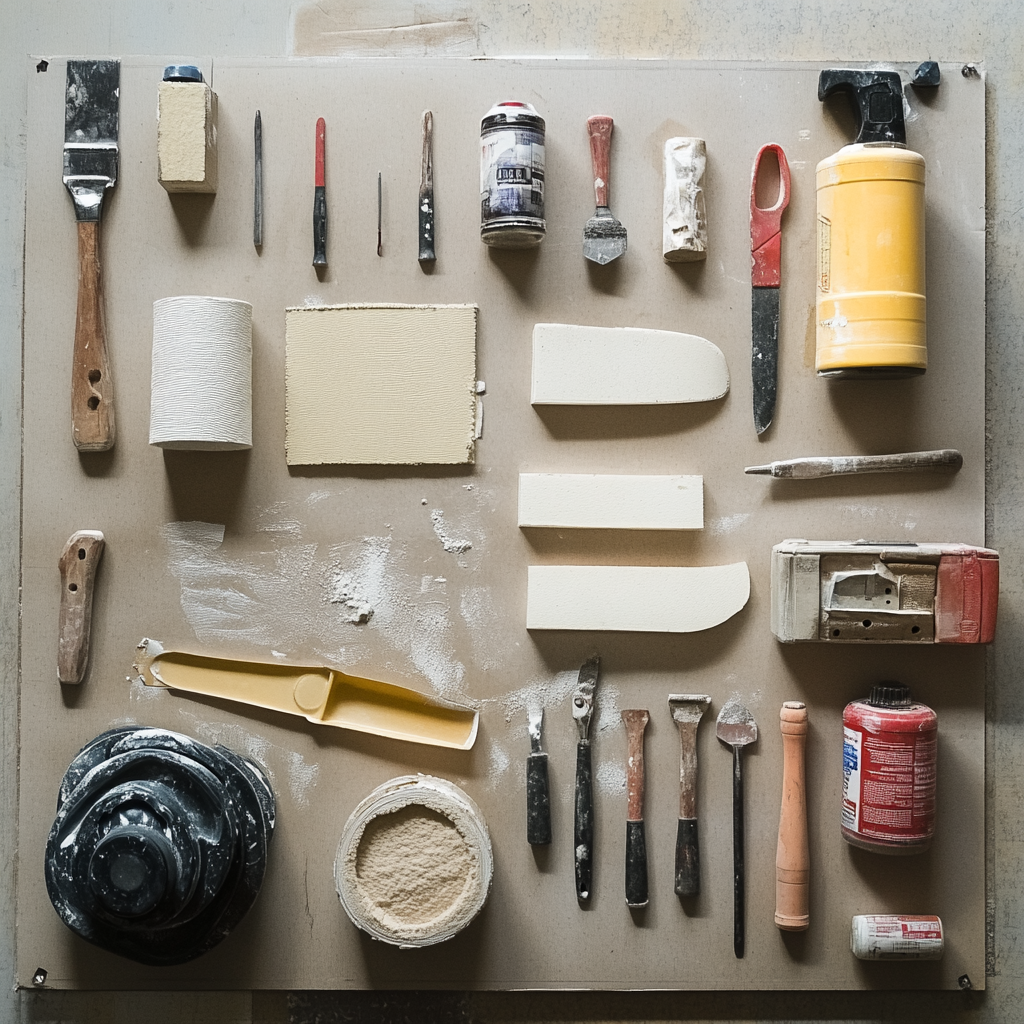
Step-by-Step Guide to Repairing Small Cracks
You can easily fix small drywall cracks, like hairline or stress cracks, to make your wall look good again. Here’s how:
Clean and Prep the Area:
- First of all you have to clean your cracks area to apply the paint and other materials to drywall. Use a dry cloth or brush to clear away any dust, debris or any loose pieces. This helps the compound adhere better to the wall.
Apply Spackle or Joint Compound:
- By the help of a putty knife scoop a small amount of spackle and carefully spread it over the drywall crack area. While you are applying spackle at that time press gently to ensure the compound fills the crack fully. Also smooth out the surface to avoid excess buildup.
Sand and Smooth:
- Once the spackle compound has dried ( usually after a ew hours) use a sandpaper to gently smooth the surface. Sandpaper helps you to smooth the surface without removing too much compound.
Prime and Paint:
- After completing the above all steps now apply a thin layer of primer over the patched area to seal the repair. Once the primer is dry, paint over it using a matching wall colour.
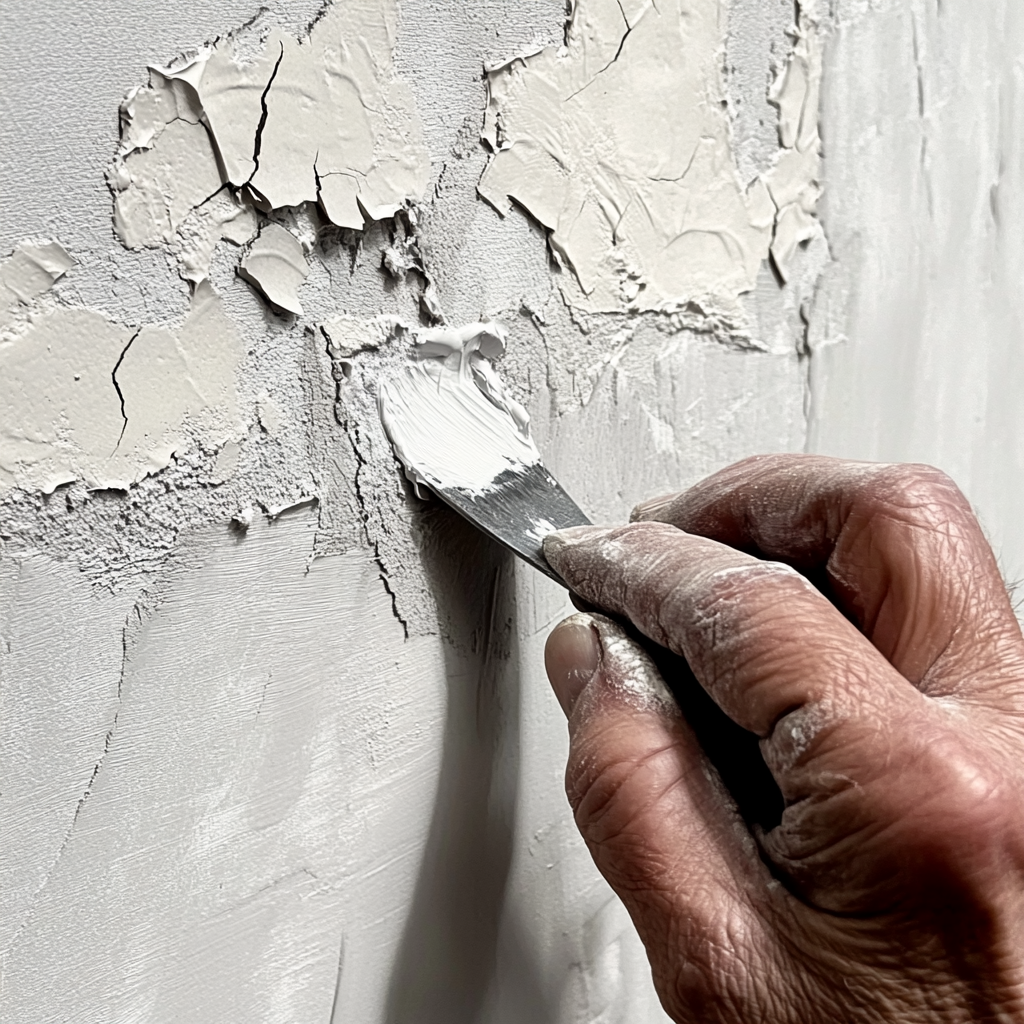
How to Fix Larger Cracks and Gaps in Drywall
Compared to small cracks larger cracks and noticeable gaps require more attention and layering for a smooth, durable repair. Follow these steps for the best results:
Prepare the Crack:
- As we discuss in previous steps, before starting your repairing process you have to prepare your working area. To do the job use a scraper or utility knife to clear out any loose material, and lightly sand around the edges of the crack. It will help compounds to bond perfectly and give a better surface.
Apply Drywall Tape:
- For wider cracks usually bigger than hairline, we will use drywall tape for reinforcement. For this type of job self adhesive mesh tape is best. It’s easy to apply and sticks well. For even larger cracks, consider using standard drywall tape with a thin layer of joint compound as an adhesive.
Layer the Joint Compound:
- Once you completed applying drywall tape, now you have to apply compound over the taped area. Takes putty knife helps to smoothing the compound over the drywall. Aim for at least 2-3 layers to create a stable repair. Letting each layer dry before adding the next.
Sand for Smoothness:
- After confirming that the final layer of compound is dried, use a sanding block or a fine grit sandpaper to smooth the surface.
Prime and Paint:
- After completing all previous steps, now apply primer over the repaired area. Once it’s dry, finish with a coat of paint to blend the repair seamlessly with the wall.
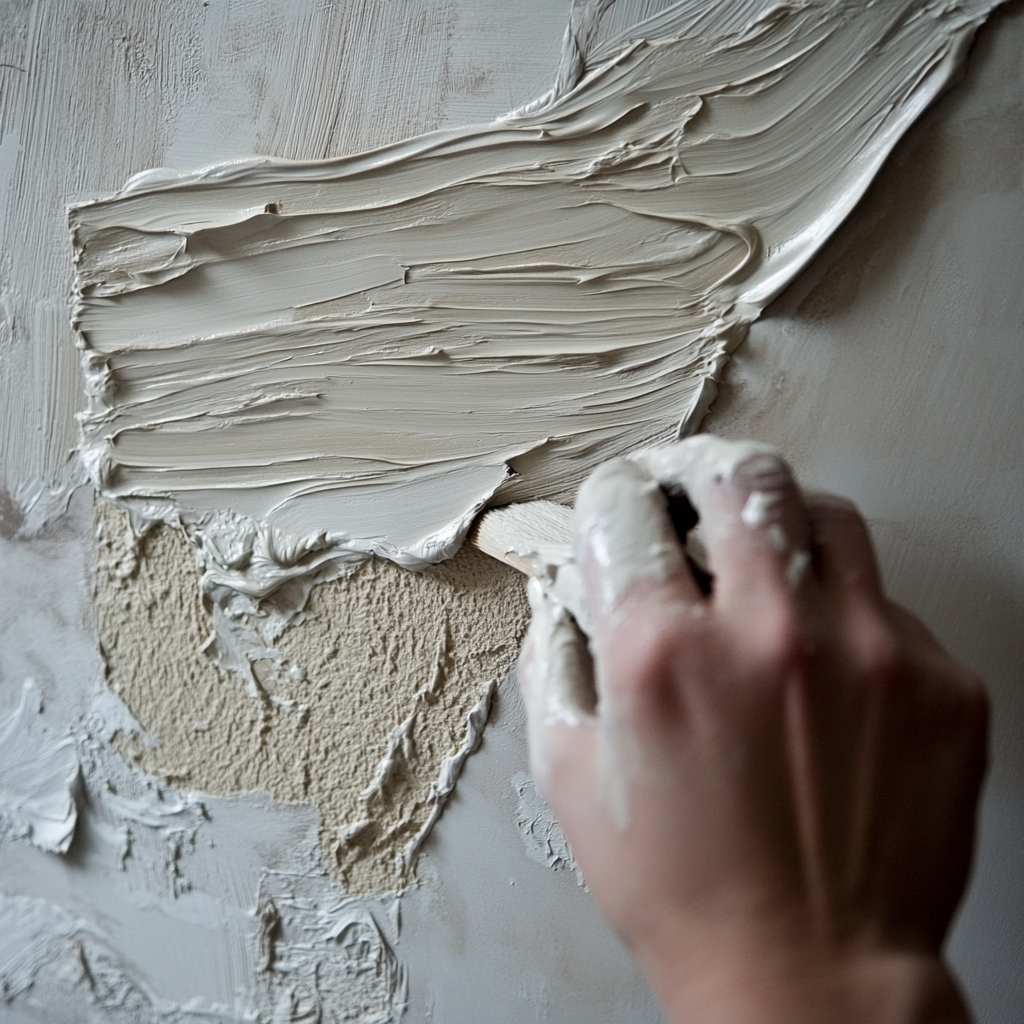
Preventing Future Drywall Cracks
To stop drywall cracks from coming back, you need to do some preventative maintenance and use the right materials. Here are some tips:
Control Moisture Levels:
- As we discuss, moisture is one of the reasons for the drywall cracks. To avoid this use dehumidifiers in damp areas and keep your home well-ventilated, especially in the kitchen and bathroom, to reduce humidity-related stress on walls.
Manage Temperature Fluctuations:
- Temperature fluctuation is one of the major reasons for drywall cracks, keep room temperatures consistent and avoid drastic shifts to prevent this type of movement.
Install Expansion Joints:
- If you notice frequent cracking in one place, then use expansion joints in that area.
Routine Inspections:
- Regularly check your walls for small cracks or signs of wear. Fixing these problems early can prevent them from getting worse.
Choose Durable Materials:
- It is one of the best solutions to prevent future drywall cracking.

